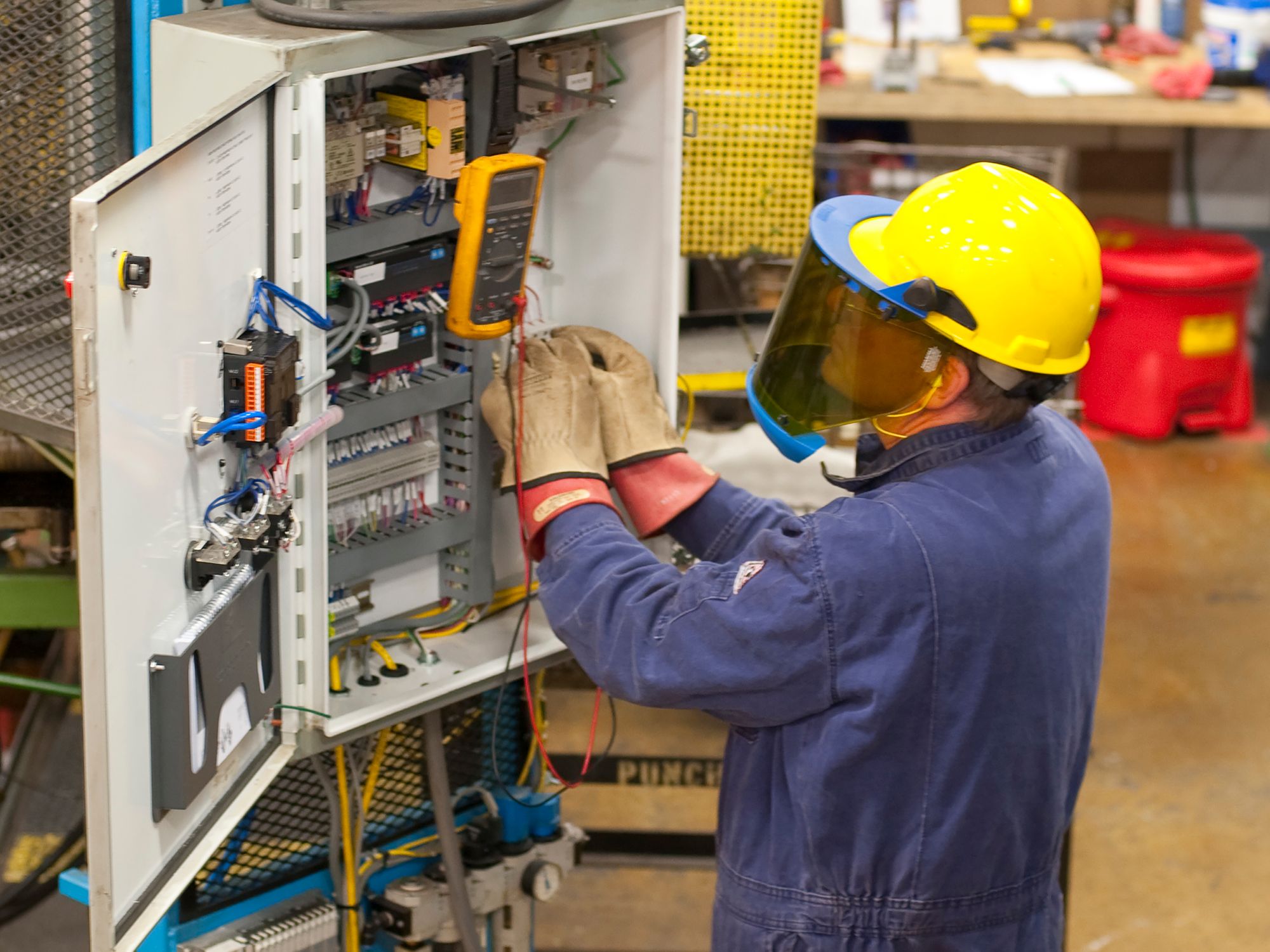Electrical safety for general industry

- OSHA standards for electrical safety are found in 1910.302-1910.399.
- OSHA’s electrical requirements apply to all workers exposed to electrical hazards at work.
Electrical accidents at work may be caused by one or more of the following: Unsafe equipment and/or installation; unsafe workplaces caused by environmental factors; and unsafe work practices.
The Occupational Safety and Health Administration (OSHA) standards are covered in 1910.302 through 1910.399 (Subpart S) — Electrical. Sections 1910.302 through 1910.308 contain design safety standards for electric utilization systems. Included in this category are all electric equipment and installations used to provide electric power and light for employee workplaces. Sections 1910.331 through 1910.335 include training and employee safeguards. Section 1910.399 contains definitions.
OSHA’s electrical requirements generally apply to all workers who are exposed to the particular hazard subject to the requirement. The requirements vary, depending on training, voltages, type of work and equipment, and other factors.
What is covered by the standards?
The general industry electrical standards cover electrical installations and utilization equipment installed or used within or on buildings, structures, and other premises, including:
- Yards,
- Carnivals,
- Parking and other lots,
- Mobile homes,
- Recreational vehicles,
- Industrial substations,
- Conductors that connect the installations to a supply of electricity, and
- Other outside conductors on the premises.
What is not covered by the standards?
The general industry electrical standards do not cover:
- Installations in ships, watercraft, railway rolling stock, aircraft, or automotive vehicles other than mobile homes and recreational vehicles;
- Installations underground in mines;
- Installations of railways for generation, transformation, transmission, or distribution of power used exclusively for operation of rolling stock or installations used exclusively for signaling and communication purposes;
- Installations of communication equipment under the exclusive control of communication utilities, located outdoors or in building spaces used exclusively for such installations; or
- Installations under the exclusive control of electric utilities for the purpose of communication or metering; or for the generation, control, transformation, transmission, and distribution of electric energy located in buildings used exclusively by utilities for such purposes or located outdoors on property owned or leased by the utility or on public highways, streets, roads, etc., or outdoors by established rights on private property.
Approved electrical conductors and equipment
Electrical conductors and equipment used by the employer must be approved.
Approved in the general industry regulations (1910 Subpart S) means sanctioned, endorsed, accredited, certified, or accepted as satisfactory by a duly constituted and nationally recognized authority or agency.
